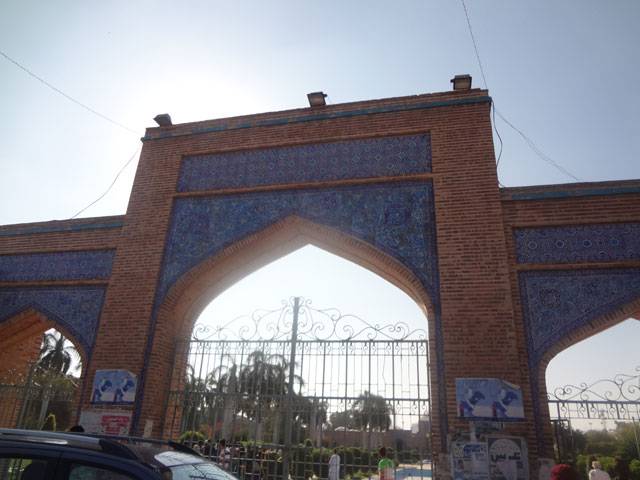by Samreen Razi - Going through the fascinating pages of history and architectural development of various spectacular mosques around the world in the book “The Mosque” by Martin Frishman and Hasan Uddin Khan was exhilarating; however, little did I know that the experience would be even more elating upon visiting one such great mosque in person.
The Jamia Masjid at Thatta, commonly known as the Shah Jahan Masjid (a fifteen minute drive from Makli in Interior Sindh) was built in 1647 by Mughal King Shah Jahan. The mosque was a gift to the people of Sindh from Shah Jahan. It was a token of gratitude for they had given him shelter when his father banished him from Delhi. Known for its eye-catching architectural work and a rich cultural history, the mosque has been on the tentative UNESCO World Heritage list since 1993.
As one enters the main gates, the unique style of mosque speaks volumes about the distinctive Mughal art. The main entrance supports the triple arched structure with the central portion as being projected higher than the others. The garden till the entrance to the mosque is an imitation of the four-quadrant char bagh style. Beyond the garden is the elegant mosque.
The mosque can accommodate 2000 namazis. The ablution area is conveniently situated at the entrance of the mosque. The corridor connects all parts of the mosque with its beautiful archways. However, one of the most striking features of the mosque is its four ‘wings,’ which have attractive detailed designs on the ceiling, complemented by matching pillars and glazed tiles in different shapes with the mosaic work, the main reason is the impressive fusion of Mughal and Turkish architectural geometrical patterns and designs on the ceiling and pillars breathe life into the building. An entrance hall connects two grand portions of the mosque.
Zeeshan Yaseen, a merchant by profession is a visitor we came across. He states, “The blue color cools down the effects of the sweltering heat on a typical hot summer day in Thatta”.
The tile work is not related to the imperial Mughal style, but to the Timurid school. The mosque is built with red bricks with bands of white rather than the pink sandstone and marble more commonly associated with Mughal buildings.
The glittering star motif is the attractive design prevailing at the mosque replacing the rosettes of other buildings dominant in Thatta such as in Makli. Interestingly these stars make a floral pattern arranged in circles around a central round motif representing a sunflower they actually represent a starry sky with all the stars moving round the sun. Stylish floral patterns resemble that of seventeenth century Kashi work of Iran.
Another interesting modification in Mughal style is also evident by the fact that there is no minaret with the calligraphy on the mosque's exterior walls.
The true skill in the architecture lies in the acoustics of the mosque that makes the az’aan (call to prayer) to be heard throughout the mosque.
Abid Memon, acting as caretaker of the mosque states, “Unfortunately, this glorious piece of architecture and heritage is deteriorating. Even more regrettable is the fact that no measures have been taken by the government to save this piece of grandeur and heritage from total destruction. We don’t get any financial or any other kind of help from the government. Even we don’t get paid to take care of the mosque. We are doing it for free.”
As I left the timeless splendor of the mosque, I realized that Shah Jahan had extravagant tastes, that the magnificent heritage requires immediate attention by the higher authorities and last but not the least, if deterioration continues then the future generations might be deprived of witnessing the history and glory of the gift of Thatta in its full exquisiteness.
INTERESTING FACTS:
- The mosque is the world's largest mosque with these many domes. The whole mosque measures 305' x 170'.
- It is the first mosque in this region to be constructed according to the principles of Mughal courtyard architecture.
- Atypical of mosques, this building is elongated along the east-west rather than the usual north-south axis.
- The mosque contains the most elaborate display of tile-work in the Indo-Pakistan sub-continent.






